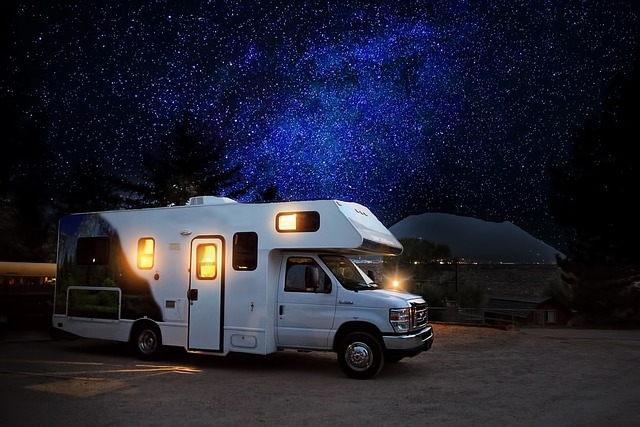Choosing the right RV insurance policy can feel overwhelming, especially with the wide range of options available. However, by assessing your needs and understanding the key features of RV insurance, you can find a policy that provides the coverage you require without overspending. This guide will help you navigate the process of selecting the best RV insurance policy tailored to your lifestyle and budget.
Understand Your RV Usage
The first step in choosing the right RV insurance is understanding how you use your RV. Insurance needs vary significantly depending on whether you use your RV full-time, seasonally, or occasionally.
Full-Time RVers
If your RV is your primary residence, you’ll need full-time RV insurance. This type of policy offers coverage similar to homeowners insurance, including liability for injuries inside the RV, personal belongings coverage, and emergency expense reimbursement.
Part-Time or Seasonal RVers
For those who use their RV for vacations or seasonal travel, part-time RV insurance provides basic protection while the RV is in use and limited coverage during storage.
For a detailed comparison of full-time and part-time RV insurance, read here.
Evaluate the Types of Coverage You Need
RV insurance policies typically offer several types of coverage. Understanding these options will help you determine which features are essential for your needs.
Liability Coverage
Liability insurance is required in most states and covers damages or injuries you cause to others. Ensure your policy includes sufficient liability limits to protect your assets.
Comprehensive and Collision Coverage
These coverages protect your RV against damage from accidents, theft, fire, vandalism, and natural disasters. If your RV is financed, your lender may require both.
Personal Belongings Coverage
If you travel with expensive equipment or use your RV as a residence, ensure your policy includes coverage for personal belongings like electronics, appliances, and furniture.
Emergency Expense Coverage
This feature covers temporary lodging, meals, and transportation if your RV becomes uninhabitable due to a covered event. It’s especially important for full-time RVers.
Roadside Assistance
Many RV insurance policies offer roadside assistance, which includes towing, flat tire changes, and battery jump-starts. Given the size and complexity of RVs, this feature is invaluable.
For more details on costs associated with these features, read here.
Assess Your Budget
Your budget plays a significant role in determining which RV insurance policy is best for you. While it’s essential to stay within your financial means, cutting corners on coverage can lead to significant expenses in the long run.
Compare Premiums
Request quotes from multiple providers to compare premiums. Keep in mind that the cheapest policy may not offer the coverage you need.
Consider Deductibles
A higher deductible lowers your premium but increases out-of-pocket costs during a claim. Choose a deductible that balances affordability with financial security.
Look for Discounts
Many insurers offer discounts for bundling RV insurance with other policies, installing safety features, or maintaining a clean driving record. Ask your provider about available discounts to reduce your premium.
Research Providers
Choosing a reliable insurance provider is just as important as selecting the right policy. Look for companies with a strong reputation for customer service, claim handling, and financial stability.
Customer Reviews
Read online reviews and ask fellow RV owners about their experiences with different insurers. Positive reviews often indicate reliable service.
Financial Ratings
Check the financial strength of insurers through agencies like AM Best or Standard & Poor’s. A high rating ensures the company can pay claims, even during widespread disasters.
Customize Your Policy
Many insurance providers offer customizable policies that allow you to add or remove specific coverages based on your needs.
Optional Add-Ons
Consider additional features like total loss replacement, vacation liability, or gap coverage. These add-ons provide extra protection for specific scenarios.
Coverage Limits
Review and adjust coverage limits to ensure you’re adequately protected. For example, if you carry high-value belongings in your RV, increase your personal belongings coverage limit.
Real-Life Example: Choosing the Right RV Insurance Policy
Imagine Maria and Tom, a couple who recently purchased a Class C motorhome for weekend getaways. After researching their options, they chose a part-time RV insurance policy that includes liability, comprehensive, and roadside assistance coverage. They also added personal belongings coverage to protect their camping gear and electronics. By customizing their policy, Maria and Tom ensured they had the necessary coverage without paying for features they didn’t need.
Tips for Making the Final Decision
- Compare Quotes: Gather quotes from at least three providers to find the best value.
- Ask Questions: Clarify any doubts with your insurance agent to ensure you fully understand the policy terms.
- Review Policy Details: Carefully read the fine print to confirm that the coverage matches your needs.
- Reassess Annually: Revisit your policy each year to ensure it still meets your requirements and budget.
Choosing the best RV insurance policy requires careful consideration of your usage, coverage needs, and budget. By following these steps, you can confidently select a policy that provides peace of mind and financial protection on all your adventures.



